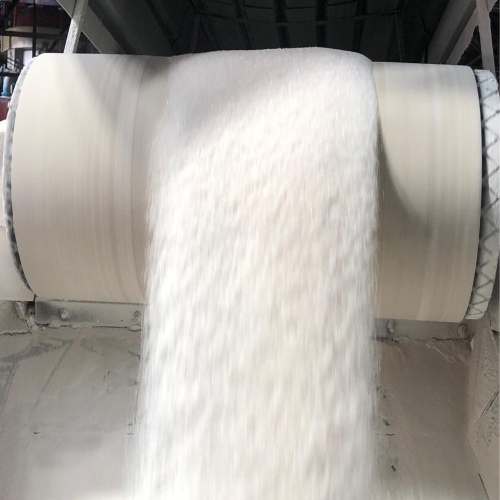Maharashtra is experiencing deficient rainfall this season, and experts predict that the rain shortage will impact sugar production in the state. A shortage of fodder is also causing mounting problems for farmers. Sugar millers are likely to face a challenging crushing season ahead, not only due to low rainfall but also because farmers are diverting their sugarcane produce for fodder.
The prolonged dry spell in August has raised alarms, signaling a drought-like situation in parts of Marathwada, North Maharashtra, and the Western Maharashtra region.
In the upcoming 2023-24 season, sugar production is expected to drop from the current season’s 105 lakh tonnes to 90 lakh tonnes.
Recently, the West Indian Sugar Mills Association (WISMA) projected sugar production at 103 lakh tonnes for new season. However, considering the current situation, the sugar body will release updated production forecasts soon.
Agrimandi.live, an analysis and forecasting company on Agri-commodities, after assessing the current situation of rain, crop growth and other factors, has forecasted sugar production in Maharashtra to be around 90 lakh tonnes for the upcoming season.
Speaking to ChiniMandi, B.B. Thombare, President of WISMA, expressed concern over the current situation. He stated that the state is currently facing a severe water shortage due to the lack of rainfall. The delayed monsoon has affected sugarcane growth, which will ultimately impact sugar production. If there is no rainfall in the near future, then it cannot be ruled out that state’s sugarcane production may decrease by up to 25 percent. If the state government initiates fodder relief measures promptly, the use of sugarcane for animal fodder can be curtailed to some extent. Simultaneously, the sugar season will need to start between October 15 and November 1. Delaying the start of the season can lead to more sugarcane being used for fodder, directly affecting the sugar mills’ crushing operations. If sugar mills do not receive an adequate supply of sugarcane, then sugar and ethanol production may decline, resulting in substantial financial losses for the sugar mills.
Recently, Maharashtra’s sugar commissioner, Dr. Chandrakant Pulkundwar, considering low rainfall also expressed concerns about expected reduction in sugar production by 12 lakh tonnes.
Abhijeet Patil, Chairman of Shri Vitthal Sahakari Sakhar Karkhana in Pandharpur taluka, stated that a proposal has been submitted to the guardian minister of the district, Radhakrishna Vikhe-Patil, to start fodder depots for animals in Solapur district, along with Pandharpur and Mangalvedha talukas, due to drought like conditions resulting from inadequate rainfall. Cattle breeders are facing difficulties in feeding their animals, and starting fodder camps would provide relief. With low rainfall, sugarcane production is also expected to decrease, necessitating careful planning for the crushing season by sugar mills.
Senior journalist and sugarcane expert Prof. MT Shelar said that, compared to other districts of the state, the condition of sugarcane crop in Kolhapur is still good. Due to proper arrangement of irrigation in the district, the crop has not been affected by drought so far. Sugarcane will be available for crushing to sugar mills in Karveer taluka as well as Kagal, Radhanagari, Hatkanangale, Shirol, Ajra, Chandgad, Bhudargad.
Recently, Jayant Patil, State President of the Nationalist Congress Party (Sharad Pawar Group), urged the Maharashtra government, in a written communication, to declare the state as drought-affected. He drew the government’s attention to the prevailing drought crisis due to deficient rainfall. Most of the crops in the Kharif season have been affected, leading to a severe scarcity of fodder for animals, posing a significant challenge for the state’s farmers to save their livestock.
As per estimation release by Indian Sugar Mills Association (ISMA) on August 02, sugar production in the country is projected to decline to 316.80 lakh tonnes during the new sugar season starting in October 2023. This decline is attributed to the increased diversion of sugar towards ethanol production. The estimate for the 2022-23 season is around 328 lakh tonnes of sugar production. ISMA also indicated that around 45 lakh tonnes of sugar are expected to be diverted towards ethanol production during the 2023-24 season, compared to an estimated 41 lakh tonnes in the 2022-23 season.












